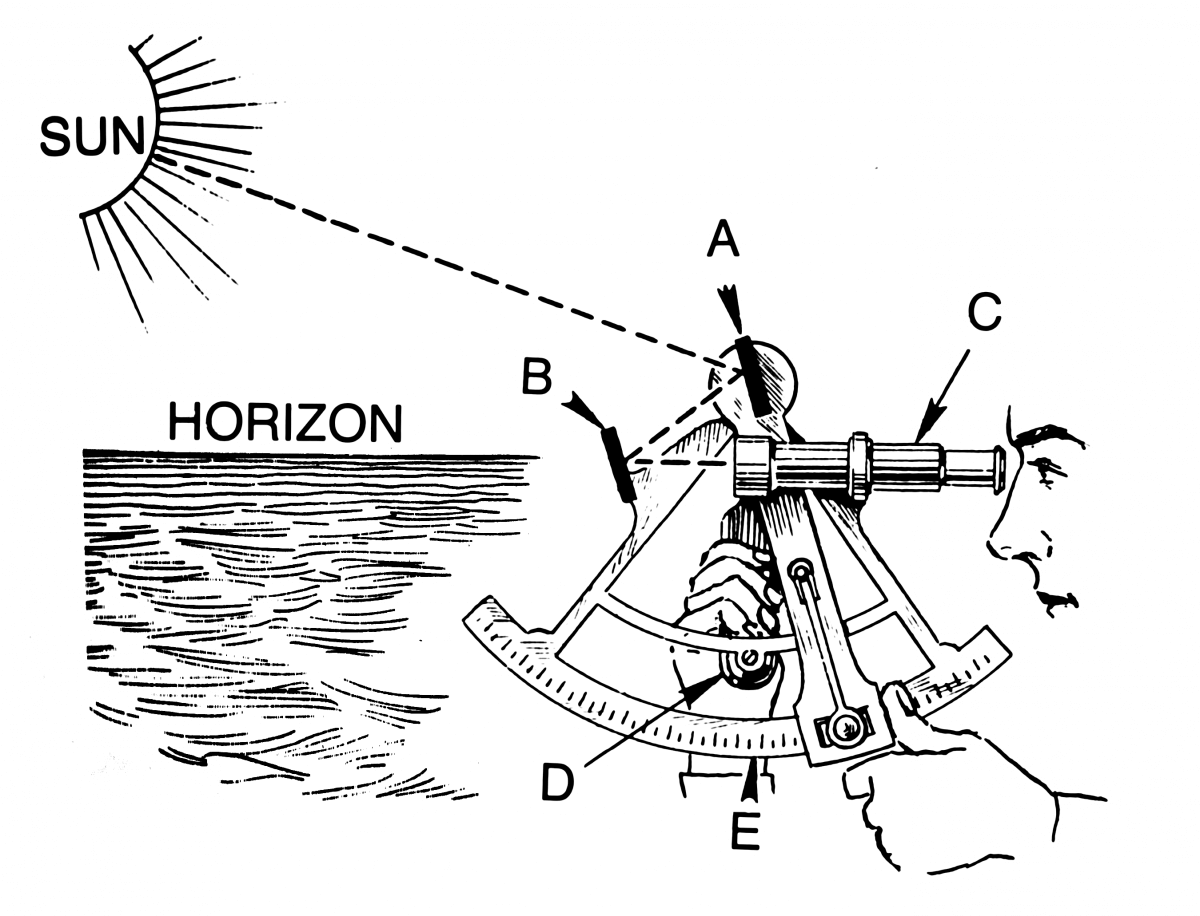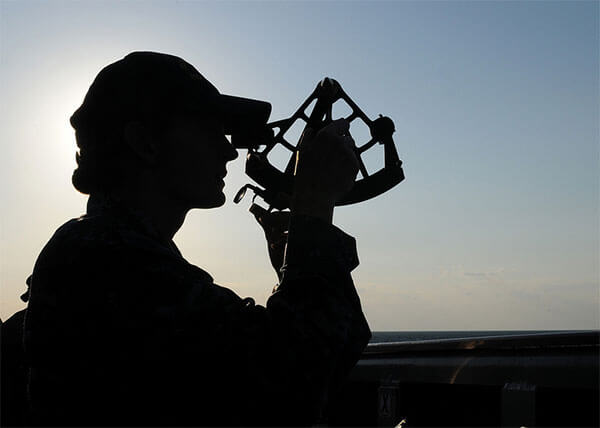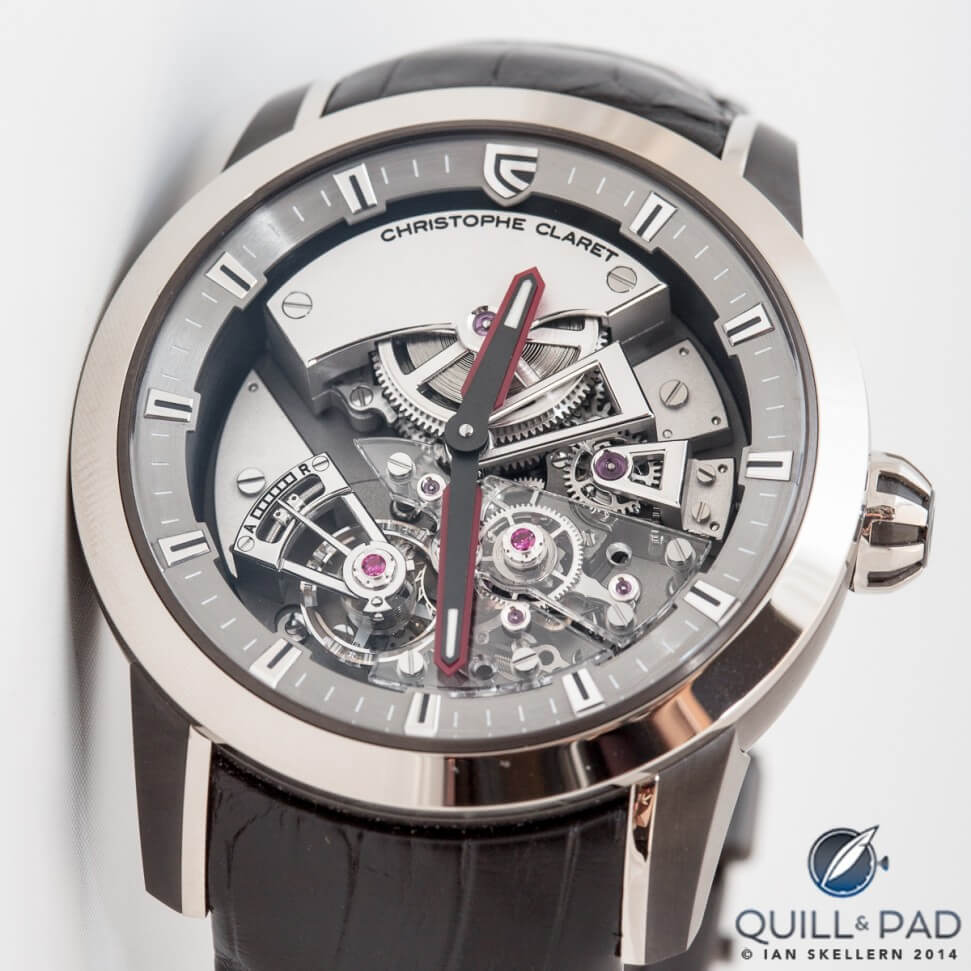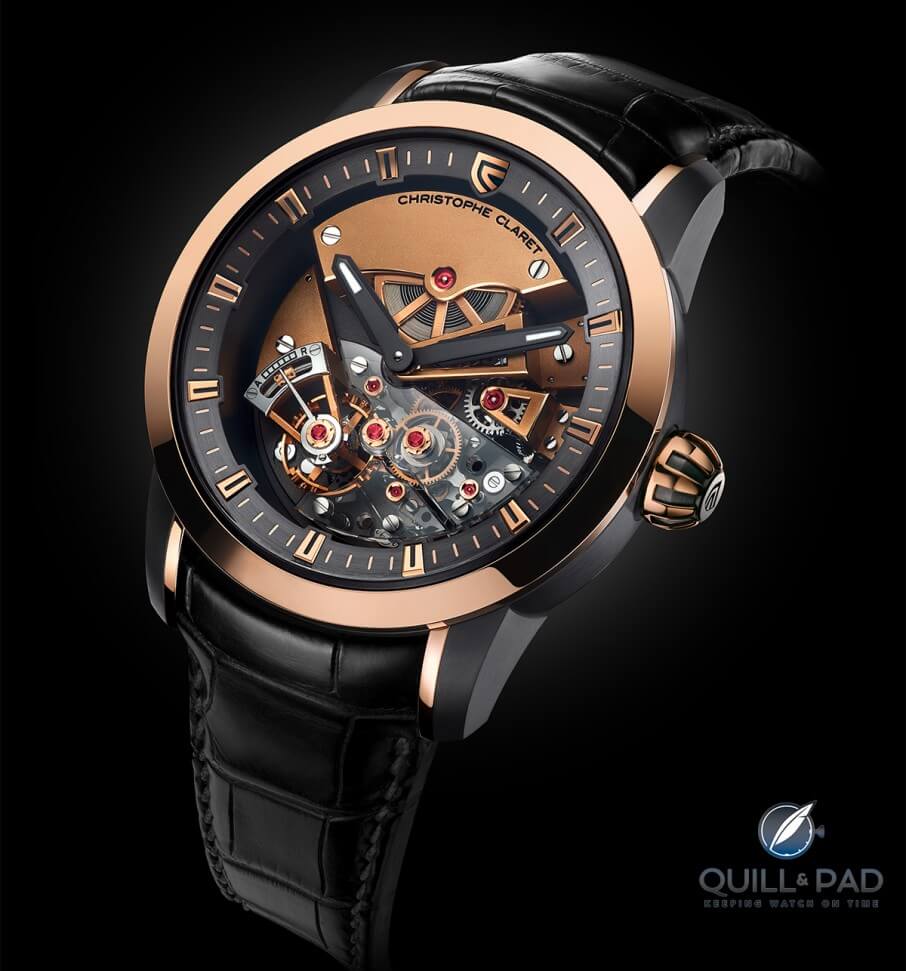Imagine this: You wake up, your head is pounding and you can hear the rhythmic sound of water lapping against something nearby. You notice that your bed is gently swaying, but you don’t feel hungover despite the headache.
So you sit up and, to your horror, the bed is not a bed at all. You are in the middle of the Atlantic Ocean in a life raft with nothing to be seen for miles.
But you don’t panic. Well, you don’t panic after the first fit of tears and blubbering for mommy, but that doesn’t count. You have your wits about you and proceed to check the raft for supplies.
Luckily, this raft just happens to have a week’s water supply, a case of energy bars, paddles, a flare gun, a set of nautical and celestial charts, a sextant (for some odd reason), and a waterproof fanny pack.
Unzipping the pack you discover your wallet and Kindle reader, which isn’t bad in case the mood strikes to finish the last few chapters of 39 Shades of Turquoise and pay for a movie with the Visa card.
But there are a few more pressing issues to take care of before you are free to read leisurely or catch that blockbuster. Wracking your brain, the next few hours go by like a stiff wind as you brainstorm ways out of this predicament.
Thinking, with the sun beating down overhead, you crack the first water bottle and choose a tasty peanut butter and chocolate energy bar. Actually, a better description would be slightly edible, but beggars cannot be choosers.
At this point the probability of immediate rescue seems low and the likelihood of stumbling upon an easy solution feels non-existent. If only you knew in which direction land was, paddling would be a viable option. But that seems like a guessing game, and also dangerous if the guess was wrong.
So what is a castaway to do?
Inspiration strikes
Suddenly inspiration strikes and multiple facts come rushing to the surface. First, you have a set of nautical maps that cover the entire coast of mainland Europe and the British Isles since your previous ride was on a cruise ship in the Atlantic heading for the southern tip of Spain.
Second, it’s clear that east should be back to civilization, though how far and to where remains to be seen.
Third, you have a sextant, which you should be able to use to determine latitude (from the angle of the sun or Polaris) and longitude (from the lunar distance between the moon and a star) for a very accurate position comparable to the aforementioned charts.
But there’s a snag. How in the heck do you use an old piece of nautical equipment like that?
Does anybody know?
Like a bolt of electrified chocolate pudding headed straight for the stomach, the memory of a conversation with your wife shoots right to the front of your brain and almost makes you laugh.
Before heading out for the trip, she said she had loaded some interesting books on your Kindle that would go along perfectly with the trip: three fiction novels set on ships, one reference for incredible architecture in the south of Spain, and, finally, a history of nautical navigation covering everything from stargazing to using modern GPS.
You had browsed that one quickly and knew there was a chapter on the sextant and how to use it.
What luck that the waterproof fanny pack would have that darn Kindle in it in the first place?!
Life-saving instrument
Pulling out the possibly lifesaving e-reader, you jump straight to the chapter on using a sextant and read the preliminary definition of what a sextant does. It is then that you know with a lot of hard work and rationing of the water, reaching land is inevitable.
Why? Because the process is fairly simple and when comparing angles to Greenwich Mean Time, you can know almost exactly where you are and need to go.
You smile as you realize a couple more facts, which are almost comical.
Before heading to the coast to catch the cruise ship, you just happened to tour the Royal Observatory in Greenwich and set your watch to the exact time in that location.
And secondly, because you are an avid horology connoisseur, you just happen to be wearing the Christophe Claret Maestoso with pivoted detent escapement and constant force mechanism, which should ensure that your watch should still be within mere seconds of official Greenwich Mean Time.
Oh, lucky day. Out of your entire collection, there isn’t one other historically-inspired timepiece like this one, and so when this trip popped onto the radar, acquiring something appropriate was a must.
Most men would have gone for some incredibly robust diver, a very obvious and unimaginative choice, but you like to rock the boat.
You also like to make situational puns as often as possible.
Making historical sense
So you decided to find a timepiece that made some sense historically and what better than a marine chronometer for the wrist. The Claret Maestoso is, for all intents and purposes, exactly that. It features the historically iconic pivoted detent escapement, whose invention revolutionized sea travel.
Significantly minimizing issues with friction, amplitude loss, and degradation of rate over time, the pivoted detent is also considered the most accurate of the spring balance escapements.
Unlike the standard lever escapement, the detent escapement is a true impulse escapement and does not slide from each locked position. Instead it is pushed out of the way with a single impulse per cycle, thereby eliminating the drag introduced and negating the need for lubrication.
Lubrication has always been one of the weak points of horology as the lubricants slowly degrade and, in some cases, harden or congeal, causing the gear train to slow or even come to a screeching halt.
But not so with the detent escapement, at least where the escapement is concerned.
So, as you ruminate about the significance of the escapement in the Maestoso, you get down to the business of using the time and the angle of the sun in relation to the horizon to figure out where in the heck you should be. Since you are not an old salt by any means, it takes more than a good while.

How to use a sextant to measure the angle between the sun and the horizon at noon to determine latitude
Determining your latitude (north/south) and longitude (east/west)
Which means multiple readings must be taken with that darn sextant as the sun does what it likes to do and keeps moving around as time passes. If the words on the Kindle can be trusted, at least as much as your sketchy-at-best readings with the sextant, you now have enough information to do the calculations and determine your latitude and longitude.
That reminds you about why the detent escapement was so critical in the first place. Clocks based on gravity or poorly calibrated springs meant that keeping accurate time on a ship was a fairly difficult task.
This difficulty created massive problems for sea-going vessels hoping to stay on course and arrive at their intended destination. Accurate time keeping was truly the only way to determine longitude while at sea, which was the best way to accurately chart a course and stay running true.
The accuracy of the detent escapement made it the absolute winner for timekeeping at sea.
The detent escapement was not without its drawbacks, however, since it was a highly precise and delicate system. Lateral shocks could be devastating, causing overbanking, stopping, or even the failure of components.
As such, the clocks fitted with this escapement were mounted in gimbaled boxes keeping the escapement isolated from the movements of the ship and the possibly clumsy first mate. The gimbaled cases also minimized the effects of gravity on the escapement and gear train.
For this reason Claret didn’t let sleeping dogs lie: he needed to ensure that the inherently fragile escapement system he wanted to put into the Maestoso would work flawlessly in the often rough and tumble environment of the wrist.
To this end Maestoso incorporates three features:
- An anti-pivot cam wheel attached to the balance wheel below the keeps the pivot from releasing when it shouldn’t.
- A “flexible” thrust bearing fitted to the balance absorbs any excess energy and reduces the risk of overbanking by limiting amplitude passively.
- A stop mechanism pauses the balance when the crown is pulled to set the time. Even the simple act of setting the time and the backward force through the system can disrupt the balance.
Again, oh lucky day
Whatever happened to you between that wonderful on-deck stroll around midnight and waking up alone in a life raft must have been rough, but not rough enough to stop the history lesson on your wrist. It’s getting late in the afternoon and the sun is sinking, which makes it much easier to understand which way you need to travel.
From your calculations you are about 75 miles southwest of Penmarch off the coast of France, the closest point of land to you. You start paddling northeast after a dinner of two bottles of water and three deliciously adequate energy bars.
This might take a while but at least you are on your way.

Close-up of the Christophe Claret Maestoso dial side showing the balance, detent escapement and constant force device
And it’s all thanks to the Christophe Claret Maestoso. You remember some other details about it that make this afternoon paddle almost enjoyable. It’s outfitted with a constant force mechanism to deliver smooth and steady force to the precise detent escapement, creating an even more accurate timekeeper. That is definitely a welcomed feature that surely is helping to save your life right now.
It dawns on you that you haven’t wound the watch since the day before the incident that brought you here. Lucky for you, the Maestoso also happens to have four mainsprings in two barrels operating in parallel, providing a very healthy eighty hours of power reserve.
Since you have no idea how long you may have been unconscious, a quick winding seems like a prudent idea. It would be silly to be nearly saved, only to be lost again thanks to laziness.
With majesty
You paddle on into the night and under the stars and crescent moon a wonder overtakes you. Soothingly, the night reminds you of the beauty of the Maestoso and the meaning of its name.
Derived from a musical term instructing a musician to play “with majesty,” it seems appropriate for the circumstances. You slow your paddling to a steady but strong rhythm, and lean forward into the night air and the beauty sprawled in front of you.
The details of your watch reflect the sky above and silver crescent is captured by the sapphire bridge and gold-ensconced jewels. The movement is the masterpiece on your wrist, and the heavens the masterpiece for your eyes.
Keeping the moon over the starboard bow of your life raft, you keep pushing until it is trailing away from your port side stern. Even though you are in an inflatable life raft, it’s nice to use nautical terms, if only to remember this is an adventure and not a rescue mission.
As the sun rises and gold spreads across the horizon, the 5N red gold of the Maestoso’s case echoes the sky and you smile once again.
Is it weird that you are actually enjoying this seemingly unfortunate series of events? Nah.
It’s been only fourteen hours, but the miles are slipping away. You take some readings around mid-morning after a short nap, and find that somehow, maybe thanks to currents, you have covered almost 30 miles (50 kilometers) and should soon be within shipping lanes for a chance at rescue.
You are feeling exhausted, no doubt, but this already has been an experience of a lifetime. You keep paddling through midday and into the evening, without seeing any sign of life. The only thing that might be a remnant of the world is what looks like a contrail far off into the distance.
As night falls, the beauty of the sky is overwhelming again and you begin to dream about staying out here, or buying a sailboat if you ever get back. Just as you take a break, check the time, and go to close your eyes, you see a glint off the face of the Maestoso, not moonlight, or starlight, but a searchlight!
It takes more than a few moments before you see it in the night, but it is there, many miles away but visible near the horizon. You scramble to find the flare gun, and let one fly into the night.
With only two more flares left you don’t want to risk shooting them all at once, but you fear they may have missed it.
After ten minutes you decide to shoot another one, just in case. As you do, you see the searchlight stop searching and turn dead straight in your direction, and almost a minute later you hear the horn sound as the ship turns in your direction.
They’ve seen you, and they are on their way to rescue a stranded collector with his new favorite object: the Christophe Claret Maestoso. Though it could be called the Maestoso L.L.S. for “Little Life Saver.”
For an animation of the detent escapement, please visit www.clockwatch.de/index.html?html/tec/hem/chf.htm.
For more information on the Christophe Claret Maestoso, please visit www.christopheclaret.com/en/collection-traditional-complications-line-maestoso-c11-p14.php.
Quick Facts
Case: 44 x 52.11 x 13.59 mm in white gold/black PVD-coated titanium, 5N red gold/black PVD-coated titanium, or just red gold
Movement: manually wound Caliber DTC07 with 80 hours of power reserve, cylindrical balance spring and detent escapements
Functions: hours, minutes
Limitation: 20 pieces of each case variation









Trackbacks & Pingbacks
[…] For more on this piece, see The Collector And The Sea: How The Christophe Claret Maestoso Might Save A Life. […]
Leave a Reply
Want to join the discussion?Feel free to contribute!